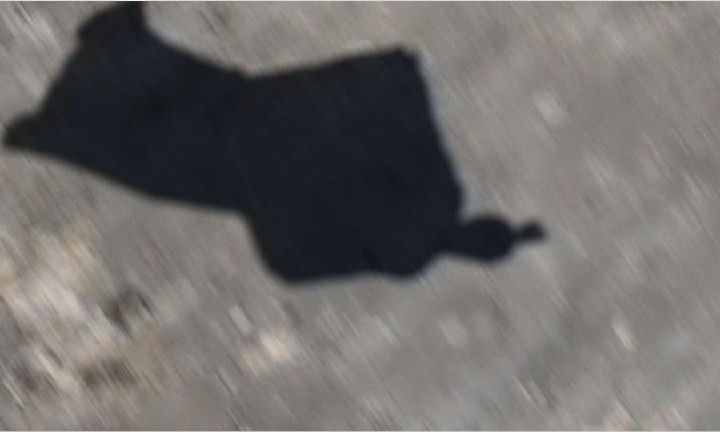Recommended Posts
Thanks, Robert, for your comments!
I agree that it is wrong to consider parts of a WS as separate systems. That is, in (Lw+Lb)/(Dw+Db) it is wrong to think that Lb and Db are the same as if the torso were flying alone. I used equations just to illustrate my point.
The aircraft you mention that use lift from fuselage are very different from the WS in that they have almost arbitrary thrust. They have a luxury of generating the lift with relatively poor (in L/D sense) fuselage because they can compensate for the increased drag with the engine thrust.
WS has very limited thrust, precisely the weight times the sine of the glide angle. The better is the glide ratio, the less is the glide angle, the less is the thrust we can work with. I believe that reducing the drag from the torso, while eliminating some lift, will be beneficial for the overall L/D. We have at least one data point supporting this point of view. It's called VKB.
Yuri
I agree that it is wrong to consider parts of a WS as separate systems. That is, in (Lw+Lb)/(Dw+Db) it is wrong to think that Lb and Db are the same as if the torso were flying alone. I used equations just to illustrate my point.
The aircraft you mention that use lift from fuselage are very different from the WS in that they have almost arbitrary thrust. They have a luxury of generating the lift with relatively poor (in L/D sense) fuselage because they can compensate for the increased drag with the engine thrust.
WS has very limited thrust, precisely the weight times the sine of the glide angle. The better is the glide ratio, the less is the glide angle, the less is the thrust we can work with. I believe that reducing the drag from the torso, while eliminating some lift, will be beneficial for the overall L/D. We have at least one data point supporting this point of view. It's called VKB.
Yuri
Android+Wear/iOS/Windows apps:
L/D Vario, Smart Altimeter, Rockdrop Pro, Wingsuit FAP
iOS only: L/D Magic
Windows only: WS Studio
L/D Vario, Smart Altimeter, Rockdrop Pro, Wingsuit FAP
iOS only: L/D Magic
Windows only: WS Studio
Hi Yuri,
Can you explain how VKB support this argument?
In Norway last year I met the VKB guys and watched them fly from #6, they did achieve some impressive glides ratios and speeds but still opened up around the same place as the other people wearing track pants. The glide ratios attained were not significantly different as the 1000' they use diving steep before starting their flight must also go into the GR calculation. (note: they were not flying along the wall at #6 btw, just straight towards the LZ )
)
BUT of course their exceptional proximity tracking skills are something else
Long flights,
J
QuoteWe have at least one data point supporting this point of view. It's called VKB.
Can you explain how VKB support this argument?
In Norway last year I met the VKB guys and watched them fly from #6, they did achieve some impressive glides ratios and speeds but still opened up around the same place as the other people wearing track pants. The glide ratios attained were not significantly different as the 1000' they use diving steep before starting their flight must also go into the GR calculation. (note: they were not flying along the wall at #6 btw, just straight towards the LZ
BUT of course their exceptional proximity tracking skills are something else
Long flights,
J
BASEstore.it
KrisFlyZ 0
Hey Yuri,
If you read Robi's "Gravity is my only engine, speed is my only friend" article you will see that VKB and Robi are making the same point.
I have some more points to add here but need to get back to work...will come back and edit or make another post.
Kris.
If you read Robi's "Gravity is my only engine, speed is my only friend" article you will see that VKB and Robi are making the same point.
I have some more points to add here but need to get back to work...will come back and edit or make another post.
Kris.
Interesting point, James. If they lose significantly more altitude initially to get into their superterminal track and yet end up opening at the same point as a traditional tracker, that means they have much better glide after the initial drop. That also means that they will have advantage on a higher wall, e.g. on a 5000ft wall they'll fly much longer distance compared to regular track. (and on the same token, disadvantage on shorter walls)
As far as I understand, this better glide is not caused just by 'flaring' the initial speed. It's a stable configuration and they can maintain the same glide for 1000ft or 10K. There seems to be a 'potential barrier' between the regular flat track and VKB track: if you assume the characteristic VKB body position from the beginning, you will not achieve enough speed for it to work. You have to go superterminal first by diving head down, then when you're past the 'barrier', transition into track.
The above is pure speculation, I hope VKB guys will chime in here and confirm or dismiss it.
Yuri
As far as I understand, this better glide is not caused just by 'flaring' the initial speed. It's a stable configuration and they can maintain the same glide for 1000ft or 10K. There seems to be a 'potential barrier' between the regular flat track and VKB track: if you assume the characteristic VKB body position from the beginning, you will not achieve enough speed for it to work. You have to go superterminal first by diving head down, then when you're past the 'barrier', transition into track.
The above is pure speculation, I hope VKB guys will chime in here and confirm or dismiss it.
Yuri
Android+Wear/iOS/Windows apps:
L/D Vario, Smart Altimeter, Rockdrop Pro, Wingsuit FAP
iOS only: L/D Magic
Windows only: WS Studio
L/D Vario, Smart Altimeter, Rockdrop Pro, Wingsuit FAP
iOS only: L/D Magic
Windows only: WS Studio
Dude,
With all the due respect your math does not make much sense and also you are using angle of attack (AOA) when you should have been using angle of incidence (AOI).
Yes the L/D is a ratio and of course the higher the better for our purpose.
However you do not take into account velocity, and AOA.
As we all know, the relationship between velocity and both, L and D, is not linear.
As velocity goes up both the L and D go up by a factor of v^2/2.
Now, the AOA.
AOA is defined as the angle between the airfoil's chord line and the direction of the airflow.
Usually the best lift (NOT L/D) is generated around 18 degrees AOA (this varies a bit for every wing section). After this number the lift drops sharply.
Drag behaves differently. Drag goes up exponentially usually past 14 degrees AOA. At around 22 degrees AOA, no matter what wing structure is used, drag completely overcomes lift.
The critical AOA is usually 16+/-2 degrees.
The best L/D is usually at 0 degrees AOA regardless the wing (subsonic).
Fortunately for us (because we fly at subsonic speeds) lift and AOA have a liner relationship at least until the critical AOA is reached.
Another variable that applies to us is the Reynolds number:
RN = rVd/m
where r = density of the fluid
d= length of the airfoil
m = viscosity of the fluid
The Reynolds number is a linear relationship with V until the flow become very turbulent then it drops sharply. Usually the higher the Reynolds number the higher the lift. Unfortunately there is not much we can do to change density and viscosity and the length of our airfoil is dictated by the length of our body.
Now let's talk about the AOI.
The AOI is defined as the angle between the wing's chord and the longitudinal axis of an aircraft.
Although we as humans really suck at flying we do have one luxury that many aircafts do not: we can change our body AOI in flight! This point is very, very important.
On an aircraft the AOI is usually set at a 6 degree angle with the fuselage.
This makes possible for the fuselage to fly leveled. This number does not apply to us though. For one because our body does produce probably just as much lift as our wings and two because we can change the AOI of our body (not the wings).
On "conventional" aircraft the vast majority of the lift is produced by the wings not the fuselage hence the AOI is never zero. There are few exceptions but think about a conventional airplane flying subsonic.
Again because we produce lift with both, our body and our wings, IMHO the AOI of the wings should just be set close to 0.
There is another little thing that very much applies to us: the longitudinal dihedral AKA decalage. This is the angle between the wing chord line and the tail chord line. And guess what? We can change this as well when flying our WSs.
The angle is very much related to the CG that varies quite a bit from jumper to jumper. Hence each jumper should work on moving their leg wing up and down to find the best decalage angle for her/his own CG.
Said that, Robi thought about all those things and then some long before anybody else.
I agree with him that a near zero AOI for all the wings is the best compromise for commercial suits.
Just my 0.02.
With all the due respect your math does not make much sense and also you are using angle of attack (AOA) when you should have been using angle of incidence (AOI).
Yes the L/D is a ratio and of course the higher the better for our purpose.
However you do not take into account velocity, and AOA.
As we all know, the relationship between velocity and both, L and D, is not linear.
As velocity goes up both the L and D go up by a factor of v^2/2.
Now, the AOA.
AOA is defined as the angle between the airfoil's chord line and the direction of the airflow.
Usually the best lift (NOT L/D) is generated around 18 degrees AOA (this varies a bit for every wing section). After this number the lift drops sharply.
Drag behaves differently. Drag goes up exponentially usually past 14 degrees AOA. At around 22 degrees AOA, no matter what wing structure is used, drag completely overcomes lift.
The critical AOA is usually 16+/-2 degrees.
The best L/D is usually at 0 degrees AOA regardless the wing (subsonic).
Fortunately for us (because we fly at subsonic speeds) lift and AOA have a liner relationship at least until the critical AOA is reached.
Another variable that applies to us is the Reynolds number:
RN = rVd/m
where r = density of the fluid
d= length of the airfoil
m = viscosity of the fluid
The Reynolds number is a linear relationship with V until the flow become very turbulent then it drops sharply. Usually the higher the Reynolds number the higher the lift. Unfortunately there is not much we can do to change density and viscosity and the length of our airfoil is dictated by the length of our body.
Now let's talk about the AOI.
The AOI is defined as the angle between the wing's chord and the longitudinal axis of an aircraft.
Although we as humans really suck at flying we do have one luxury that many aircafts do not: we can change our body AOI in flight! This point is very, very important.
On an aircraft the AOI is usually set at a 6 degree angle with the fuselage.
This makes possible for the fuselage to fly leveled. This number does not apply to us though. For one because our body does produce probably just as much lift as our wings and two because we can change the AOI of our body (not the wings).
On "conventional" aircraft the vast majority of the lift is produced by the wings not the fuselage hence the AOI is never zero. There are few exceptions but think about a conventional airplane flying subsonic.
Again because we produce lift with both, our body and our wings, IMHO the AOI of the wings should just be set close to 0.
There is another little thing that very much applies to us: the longitudinal dihedral AKA decalage. This is the angle between the wing chord line and the tail chord line. And guess what? We can change this as well when flying our WSs.
The angle is very much related to the CG that varies quite a bit from jumper to jumper. Hence each jumper should work on moving their leg wing up and down to find the best decalage angle for her/his own CG.
Said that, Robi thought about all those things and then some long before anybody else.
I agree with him that a near zero AOI for all the wings is the best compromise for commercial suits.
Just my 0.02.
Memento Audere Semper
903
903




The WS jumps in Superterminal are all made with the old GTIs...
A minute, huh? With his new suit, Andreas will do it in 45 sec :)
VKB#11
Share this post
Link to post
Share on other sites